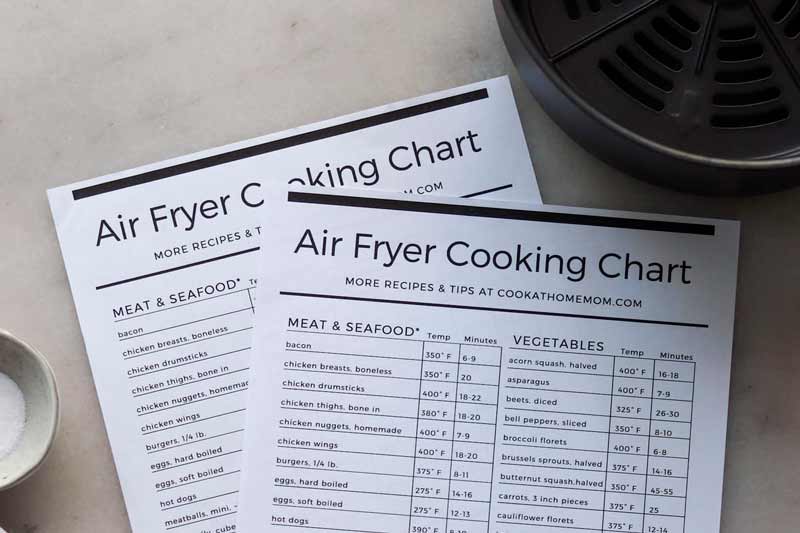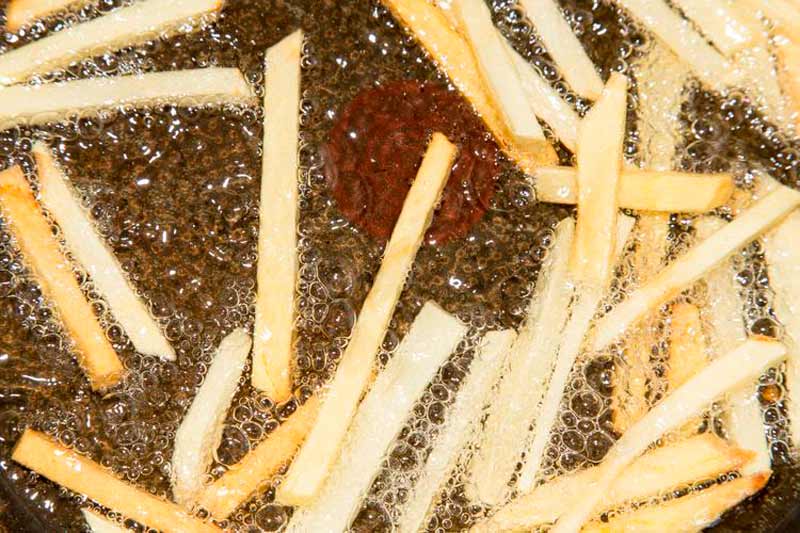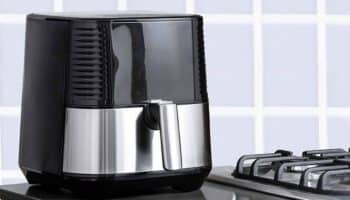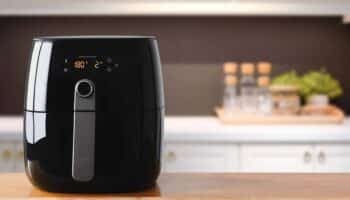Burning a meal is no fun. You smoke up your kitchen, you stink up your kitchen, and you potentially destroy your meal. So learning how not to burn food in your air fryer is important, right?
Once you’ve read the following, you’ll be able to use your air fryer like a pro and never have to worry about a burnt meal.
There are several reasons why your air fryer could be burning your food, which include the temperature you’re cooking at, the length of time you’re cooking for, you’re using too much oil or the wrong kind of oil, you’re overloading the basket, or perhaps you’re neglecting to flip or turn your food.
Keep reading for further insights.
#1 Always Read the Instruction Manual
Every make and model of air fryers is unique in its own way, so recipes and cooking instructions you find online that work for one air fryer may not work for another.
Most air fryers come with cooking instructions for several basic foods, so be sure to refer to that as a base or initial step.
#2 Don’t Assume Cooking Times Match a Conventional Oven

You may be tempted to cook meals in your air fryer that you typically cook in your oven — which is absolutely fine. However, don’t assume that the cooking time in your oven is equivalent to the cooking time in your air fryer, even though they’re both set at the same temperature.
This is especially true if your full-size oven is not a convection oven.
There are two things to consider. First, air fryers use convection heat — and some of them use “super convection” which provides an increased volume of air.
Why is this important? Convection heat means faster cooking and if your air fryer uses “super convection” it’s faster still. So if you use a recipe that’s timed for a conventional oven you need to adjust your cooking time down since your food cooks faster.
This may take some trial and error but reduce your cooking time until you find the right amount. Or better yet, try using this oven to air fryer temperature converter. Unfortunately, it’s only available Fahrenheit, but with a little bit of conversion of your own from Fahrenheit to Celsius, you should be able to come to an accurate calculation.
#3 Flip or Shake Your Food
This is a good practice regardless, as it helps to ensure uniform cooking. Additionally, when you open your air fryer to flip or shake your food, you’ll be able to inspect your meal in terms of how well done it is.
Turning your food halfway through the cooking process helps to expose all sides to the hot air circulating in the oven basket, promoting even heat distribution.
#4 Don’t Overcrowd the Basket
While you may be tempted to cram as much food as possible into the air fryer basket, this isn’t recommended.
Remember, your food is cooked using the convection method. This means that your food is cooked with the aid of a fan that is circulating hot air throughout the basket. If the basket is too full — and especially if it’s full and you don’t shake or turn your food — the food in the middle won’t cook, while the food at the outside will burn.
Always leave enough space between food items for the air to circulate freely. This may mean only using single or shallow layers of food.
#5 Keep Your Air Fryer Clean
If you’re in the habit of cooking a meal and then packing up your air fryer until the next time you use it without cleaning in between, this is a recipe for burnt food — or, at the very least, the smell of burning food.
Any particles of food or grease that are left in the basket will eventually begin to burn.
#6 You’re Using Too Much Oil

We’re entering into something of a Goldilocks situation here.
If you use too much oil on your food, or even if you’re cooking foods that have a high fat content, you increase the risk of burning your food since oil increases heat transfer. More oil equals more heat, and more heat equals burned food.
You can check your owner’s manual, but in most cases your fryer only calls for about a teaspoon or two of oil to coat your food, and even that may be too much depending on you’re cooking.
#7 You’re Not Using Enough Oil
Just like too much oil can be a problem, so can a lack of oil.
Even though your air fryer likely has nonstick trays, not using oil on foods that contain little to no oil of their own, can lead to food sticking on the tray or basket and then ultimately burning.
Raw food contains moisture, and as it begins to cook the moisture evaporates. An absence of moisture plus an absence of oil creates dry food and dry hot air which could lead to your meals burning.
#8 You’re Using the Wrong Kind of Oil
Each cooking oil has its own chemical composition, which makes certain oils better for certain uses. Some oils are not recommended for high-heat cooking, and these are the oils with a low smoke point.
Interestingly, smoke point is also referred to as the burning point, and this is the point at which oil or fat produces visible blue smoke. So you always want to choose oil that has a high smoke point.
Some good options are:
- Avocado oil – 520°F / 271°C smoke point
- Light olive oil – 465 – 470°F / 240 – 243°C smoke point
- Clarified butter (ghee) – 482°F / 250°C smoke point
- Sunflower oil – 450°F / 232°C smoke point
- Peanut oil – 450°F / 232°C smoke point
#9 Your Nonstick Layer Has Been Compromised
If you’ve ever used a nonstick frying pan, you know that nonstick coating doesn’t last forever.
If your air fryer basket or tray has nonstick coating that is chipped away or is flaking off, your food can stick to the surface below and burn. And burning your food is not the worst of your problems if this is happening. Without knowing the quality of the coding for the metal underneath, it’s impossible to say what impact this could have on your health, but better safe than sorry as it might be toxic.
The lesson here is that if your nonstick coating is no longer in 100% condition, it may be time to update your air fryer.
Conclusion
If your air fryer is more of an incinerator than a cooking appliance, there’s a good chance it’s just because you’re doing something wrong. Or it could be you need a new air fryer.
To recap, here is a list of things you need to do — or don’t do.
- Read your instruction manual
- Don’t assume cooking times match your conventional oven
- Always flip or shake your food
- Don’t overcrowd the basket
- Keep your air fryer clean
- Don’t use too much oil
- Make sure to use enough oil
- Use the right kind of oil
- Don’t use an air fryer with chipped or peeling nonstick coating
Hopefully, one or more of the items on this list will help solve the issue of your air fryer burning your food.
While you’re here, why not check out our related posts below? Perhaps we can help you with something else.







